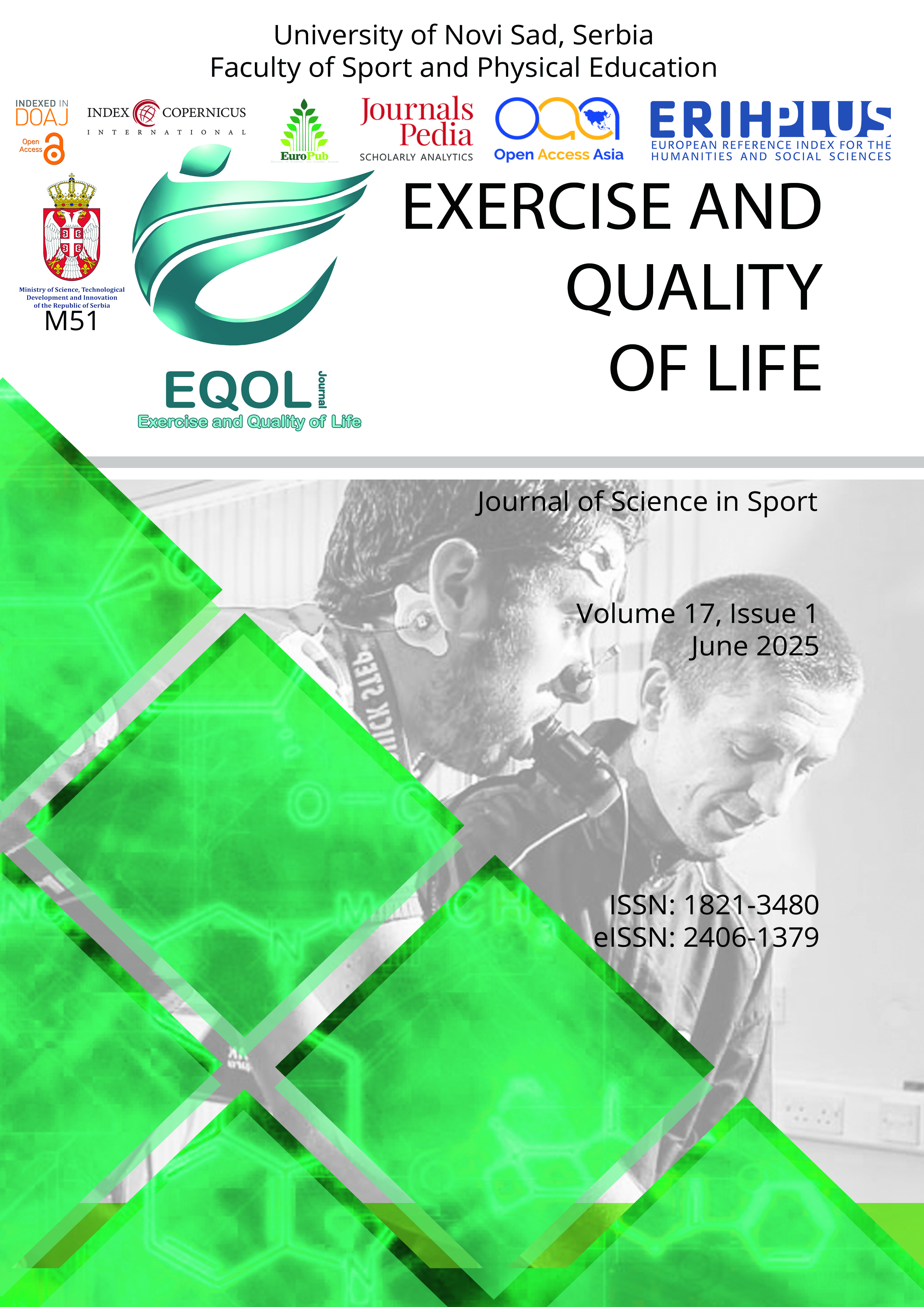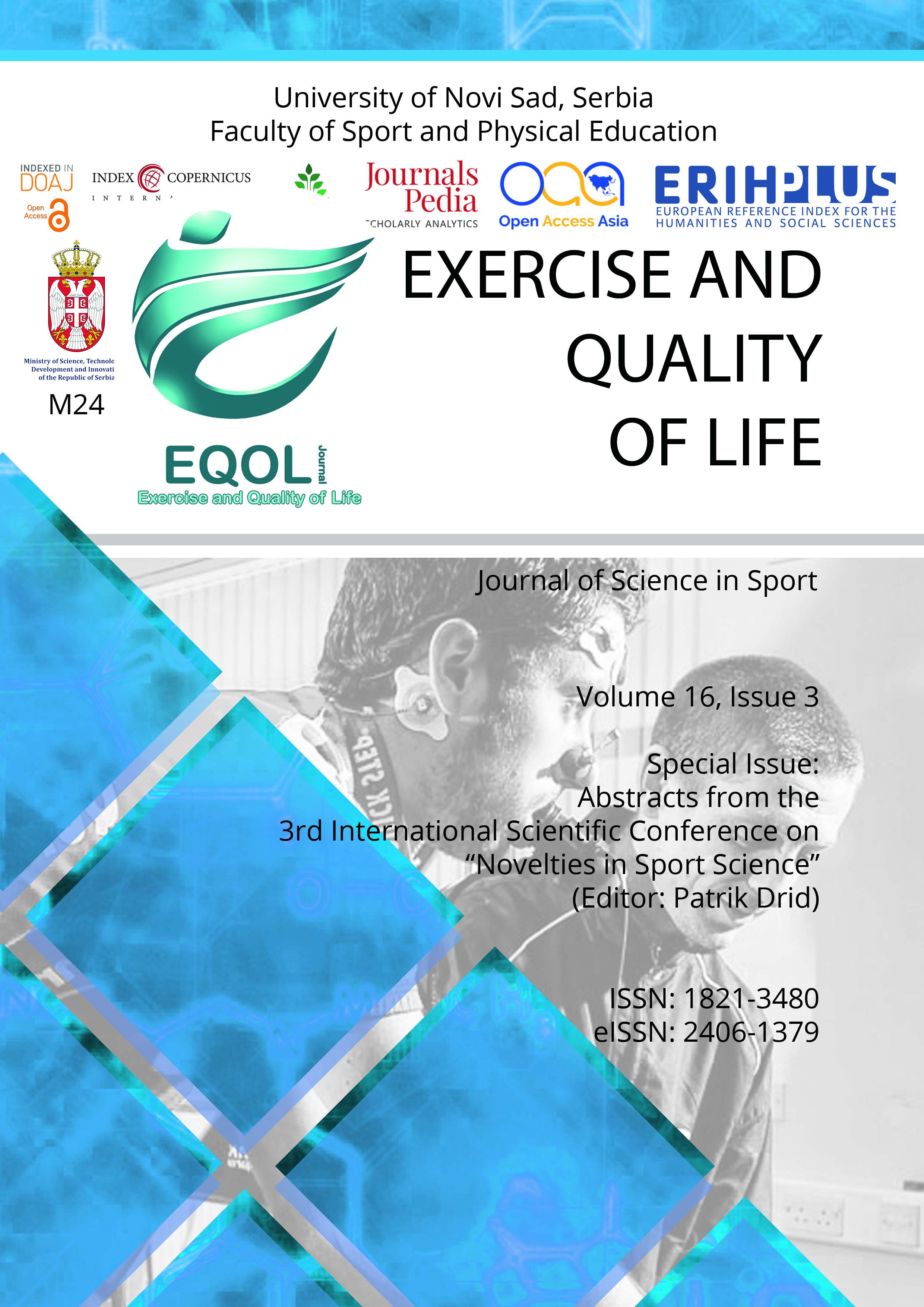Current issue

Volume 17, Issue 1, 2025
Online ISSN: 2406-1379
ISSN: 1821-3480
Volume 17 , Issue 1, (2025)
Published: 15.06.2025.
Open Access
All issues
Contents
01.06.2015.
Original scientific paper
Creation of English-based tennis terms in Serbian
The aim of this study is to carry out terminological standardization of tennis terms in Serbian as a contribution to publishing the 2nd expanded edition of the existing EnglishSerbian dictionary of sports terms entitled Englesko-srpski rečnik sportskih termina. Research is a corpus-based contrastive analysis of tennis terms in English and Serbian, which were taken over from Tenniswikipedia glossary containing 254 entries, commentaries in Serbian during live broadcast of Masters and 2014-2015 GrandSlam matches, and online Serbian journalistic texts on tennis. The contrastive approach is justified by the fact that tennis terms in Serbian are created by adaptation of English terms through transshaping and translation. Given that tennis is a recently popularized sport in Serbia and that no serious attempt has been made so far to compile a glossary of standard tennis terms in Serbian, the findings indicate abundance of non-adapted lexical borrowings from English, due to which terminological standardization deserves particular attention.
Mira Milić, Željko Jonić, Ivana Đurić Mojsilović
02.12.2015.
Original scientific paper
STRESS COPING RELATIVE TO COMPETITIVE EXPERIENCE OF HANDBALL PLAYERS
The aim of this study is to examine differences in stress coping between handball players of
different competitive experience. The sample consists of 127 handball players from 10 clubs
in Serbia, 83 of whom are males and 44 are females. All participants are divided in three
groups, which are formed according to their competitive experience: up to 5 years (n = 42),
up to 10 years (n = 58), over 10 years (n = 26), with an assumption that there are no
significant differences between male and female handball players (p = .909). General SelfEfficacy Scale (SGSE; Schwarzer, & Jerusalem, 1981) is applied. The findings indicate that
there are significant differences in stress coping between handball players with different
levels of competitive experience (p = .021); the longer the competitive experience, the more
efficient stress coping is. As regards the findings of previous studies and the specificity of
handball, this paper provides possible explanation of obtained results and their
implementation in everyday activities of athletes and coaches.
Goran Žakula, Tatjana Tubić
02.12.2015.
Original scientific paper
THE EFFECTS OF LIVE AND VIDEO DEMONSTRATION ON THE EARLY ACQUISITION OF A NEW MOTOR TASK
Demonstration is a widely used method in sports teaching and coaching, as well in Physical
education classes. The most commonly used types of demonstration live demonstration and
video demonstration. However, a direct comparison between these two types of model has
rarely been undertaken in a motor context. Therefore, the aim of this reseasrch is to specify
and compare the effects of the two different metric protocol, former standard and the new
video demonstration, on the estimation of the test results in the primary school.The
participants involved the third and the fourth year students from four elementary schools in
Petrinje and Sisak which territorialy belong to urban area of the Sisak- Moslavic county. The
total number of students on whom this research has taken place was 327, of which 186 were
boys and 141 were girls at the age of 10,5. The students were divided into two subsamples
considering the used treatment,both standard and video demonstration protocol. The sample
of variables in this research consists of four tests for evauating motor abilities: Shuttle run,
Back-save sit and reach for the right and left leg, Push-ups and Curl up. The use of video
demonstration protocol for task performance has shown a significant effect in the tests
Shuttle run and Curl up, while significant effects were not gained in both both flexibility tests
(Back-save sit and reach for the right and left leg) and strength tests (push-ups) due to the
protocol. The results indicated that video demonstration seems more effective than the live
one for the early acquisition of a completely new motor skills.
Ivan Vrbik, Tomislav Krističević, Goran Sporiš, Dejan Madić
02.12.2015.
Original scientific paper
DOES THE CHANGE OF TESTING PROTOCOL HAVE AN INFLUENCE ON THE RELIABILITY IN MOTOR SKILL TESTS?
The aim of this research was to determine the effect of two different metric protocols, the
present standard and a new protocol with a video demonstration of the task, on reliability and
homogeneity of motor skills assessment tests for the students in primary education. The
sample of participants comprised ofstudentsin the third and fourth grades from four
elementary schools in the urban area of Petrinja and Sisak in Croatia. The total number of
students that participated was 327, consisting of 186 boys and 141 girls aged 10.5 years. The
students were divided in two subsamples, based on the protocol applied. The sample of
variables consisted of 4 motor skills assessment tests: Shuttle-run, Partial Curl-up, 90° Pushups, Back-saver sit and reach.The results of metric characteristics of composite testing in the
field of motor skills have shown a high level of reliability, homogeneity and sensitivity of
tests after both protocols were applied. Based on the reliability coefficient, the test called
90°Push-ups can be used further by using the video demonstration protocol, with a few trials
before the application, while the test called Partial Curl-updoes not allow the use and
application of the test in this form and using this method. The research shows that, with
correction of some tests, the new protocol with the video demonstration has better results of
metric characteristics of tests compared to the standard protocol.
Krešimir Šamija, Ivan Vrbik, Dejan Madić, Goran Sporiš
02.12.2015.
Original scientific paper
IMPLEMENTATION OF ASSESSMENTS FOR LEARNING IN ELEMENTARY SCHOOL PHYSICAL EDUCATION PRACTICE
Assessment for Learning (AfL) strategies can be regularly used to gauge and respond to
student progress in an international school learning environment. In its various forms,
assessment is crucial for helping students to learn, better understand their learning process,
and should be an ongoing means of learning feedback. The aim of this study was to
determine the possible opportunities for implementing AfL in elementary school physical
education classes. AfL provides feedback on what has been done well, what is understood
and how to progress. For each of the key skills in physical education, clear performance
criteria could be articulated in the form of a teacher’s and child’s rubric. Examining the
reflections of six PE teachers on their experience in working with AfLs, it was proved that
implementing AfL in elementary school PE practice encourages and enables students to
assess their own learning and progress. This method of assessment also helps teachers to
improve individual student learning and not just record or identify which learning stage a
student resides.
Mila Fischer, Adrian J. Haug
01.06.2014.
Original scientific paper
THE IMPORTANCE OF POSTURAL STATUS FOR THE HEALTH OF CHILDREN AND YOUTH
Postural disorders occur not just among school children but also among preschoolers, the
fact which coincides with critical periods of growth and development that are characteristic for
the occurrence of the mentioned disorders. They can be located on all the segments along the spinal column, torso and lower limbs. Good body posture is of great importance for healthy growing
of the youngest while poor postural status harmfully influences locomotor system, circulation, as
well as respiratory and digestive system. Inadequate position while sitting, standing and walking
(as the result of muscular disbalance) causes pain in cervical, thoracic and lumbar part of the spinal column, which later influences the overall quality of life. Surveys and numerous researches of
the locomotor system are all aimed at finding the most adequate system of preventive and corrective activities with an emphasis on timely diagnostic of changes.
Branka Protić - Gava
01.06.2014.
Original scientific paper
Physiotherapy aspect of diagnosis and treatment of postural disorders
Postural disorders are common among preschool and school-age children. In regard to gender and age distribution, children are characterized by different indicators of body posture. Posture
for different professionals has different importance, and from a standpoint of one physiatrist it represents a measure of the efficiency of muscular balance and neuromuscular coordination. Bad posture represents a functional deviation from normal posture status without structural changes to the
spine or lower extremities. Evaluation and treatment of postural disorders requires knowledge of
basic principles related to the conduct of individual body segments, joints and muscles. The combined physical training programmes that include strength and muscle stretching exercises, particularly with regard to the postural antigravity muscles, should help in the prevention of health problems that could occur later in life. Future research on the impact of early school-based back posture promotion in relation to the integration of back posture principles according to biomechanical
favourable lifestyle and back pain prevalence later in life is essential.
Snežana Tomašević-Todorović
01.06.2014.
Original scientific paper
DIFFERENCES IN INDICATORS OF POSTURAL STATUS BETWEEN BOYS AND GIRLS FROM SREM
Improper seating, various forms of activities as well as certain endogenous and exogenous
factors negatively affecting on postural status and does not lead to any body improvements. A
healthy and good posture is the basic form for properly constructed mechanics and the assumption
of good statics and dynamics of whole body. Postural status was evaluated on the sample of 833
children, aged 4-13, from the population of Preschool institution and Elementary School in Municipality of Ruma, Stara Pazova, Sremska Mitrovica and Indjija. Two anthropometric measures and
CONTEMPLAS 3D system for evaluation postural status were applied. Parameters of postural status and trend were analysed wit basic descriptive statistics ANOVA and MANOVA. Result show
that almost 30% of all children have bad posture and there is a high number of those with weaker
body segments. Boys have better posture status than girls especially in legs deformity.
Milan Kojić
01.06.2014.
Original scientific paper
SCOLIOSIS AND TREATING SCOLIOSIS WITH SCHROTH METHOD
Idiopathic scoliosis is a deformity of the spinal column and is found among healthy children. Etiology of idiopathic scoliosis is unknown. Spinal shift occurs in all three planes followed
by muscle disfunction and reduced vital capacity of the lungs. Asymmetric loading on the spine
can be listed as one of the factors of rapid progression of scoliosis, whereby large pressure is put on
the concave side of the scoliotic curvature due to the shift of standing balance of the body. Rehabilitation is based upon improvement of functionality, ability and capacity of the patient with scoliosis. The initial stage of rehabilitation rests on correct diagnosis and estimation of patient’s condition in order to commence the treatment in the best possible manner. The Schroth method has a
long-standing tradition and is primarily applied in correction of scoliosis. It is based on three-dimensional breathing, proper pelvic correction and specific exercises and education of patients in
order to continue the treatment at home.
Nikola Jevtić
01.06.2014.
Original scientific paper
FASCIA – THE FORGOTTEN TISSUE
Fascia is an important component of connective tissue that surrounds bones, muscles, blood
vessels, nerve and organs of the body. The fibrous fascia creates a web that wraps around structures of the body, providing a continuum that unites the entire human body from head to toe without interruption. The term myofascial refers to the unit comprised of muscle and connective tissue. A myofascial meridian can be defined as a linear series of muscles units interconnected within the fascial webbing of the body. A myofascial meridian transfers tension sequentially from one
myofascial unit of the meridian to the next. Understanding the role of fascia in postural distortion
is of vital importance to movement therapists. Poor posture deforms the fascia and stress the muscles, resulting in pain and weakness. Correction is possible, but both muscles and fascia need to
be taken into account.
Dušica Marić, Mirela Erić, Bojana Krstonošić, Dragana Smiljenić





























